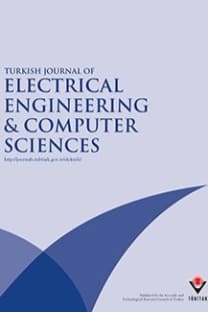Variable charge/discharge time-interval control strategy of BESS for wind power dispatch
Battery energy storage system, wind power dispatch, battery life, storage energy loss, fuzzy control
Variable charge/discharge time-interval control strategy of BESS for wind power dispatch
Battery energy storage system, wind power dispatch, battery life, storage energy loss, fuzzy control,
___
- Ling Y, Cai X. Exploitation and utilization of the wind power and its perspective in China. Renew Sust Energ Rev 2012; 16: 2111–2117.
- Wee KW, Choi SS, Vilathgamuwa DM. Design of a least-cost battery-supercapacitor energy storage system for realizing dispatchable wind power. IEEE T Sustain Energ 2013; 4: 786–796.
- Gyawali N, Ohsawa Y, Yamamoto O. Power management of double-fed induction generator-based wind power system with integrated smart energy storage having superconducting magnetic energy storage/fuel-cell/electrolyser. IET
- Renew Power Gen 2011; 5: 407–421. [4]Goel PK, Singh B, Murthy SS, Kishore N. Isolated wind-hydro hybrid system using cage generators and battery storage. IEEE T Ind Electron 2011; 58: 1141–1153.
- Dicorato M, Forte G, Pisani M, Trovato M. Planning and operating combined wind-storage system in electricity market. IEEE T Sustain Energ 2012; 3: 209–217.
- Perez E, Beltran H, Aparicio N, Rodriguez P. Predictive power control for PV plants with energy storage. IEEE T Sustain Energ 2013; 4: 482–490.
- Jiang Q, Haijiao W. Two-time-scale coordination control for a battery energy storage system to mitigate wind power fluctuations. IEEE T Energy Conver 2013; 28: 52–61.
- Jiang Q, Hong H. Wavelet-based capacity configuration and coordinated control of hybrid energy storage system for smoothing out wind power fluctuations. IEEE T Power Syst 2013; 28: 1363–1372.
- Teleke S, Baran M E, Bhattacharya S, Huang A Q. Rule-based control of battery energy storage for dispatching intermittent renewable sources. IEEE T Sustain Energ 2010; 1: 117–124.
- Teleke S, Baran ME, Bhattacharya S, Huang AQ. Optimal control of battery energy storage for wind farm dispatching. IEEE T Energy Conver 2010; 25: 787–794.
- Le HT, Santoso S, Nguyen TQ. Augmenting wind power penetration and grid voltage stability limits using ESS: application design, sizing, and a case study. IEEE T Power Syst 2012; 27: 161–171.
- Wang P, Gao Z, Bertling L. Operational adequacy studies of power systems with wind farms and energy storages. IEEE T Power Syst 2012; 27: 2377–2384. [13]Gabash A, Li P. Active-reactive optimal power flow in distribution networks with embedded generation and battery storage. IEEE T Power Syst 2012; 27: 2026–2035.
- Liang L, Zhong J. Optimal control of battery for grid-connected wind-storage system. In: IEEE 15th International Conference on Harmonics and Quality of Power; 17–20 June 2012; Hong Kong, China. New York, NY, USA: IEEE. pp. 701–706.
- Tewari S, Mohan N. Value of NAS energy storage toward integrating wind: Results from the wind to battery project. IEEE T Power Syst 2013; 28: 532–541.
- Wang J, Liu P, Hicks-Garner J, Sherman E, Soukiazian S, Verbrugge M, Tataria H, Musser J, Finamore P. Cycle-life model for graphite-LiFePO
- cells. J Power Sources 2011; 196: 3942–3948.
- Agarwal V, Uthaichana K, DeCarlo RA, Tsoukalas LH. Development and validation of a battery model useful for discharging and charging power control and lifetime estimation. IEEE T Energy Conver 2010; 25: 821–835.
- Tran D, Khambadkone AM. Energy management for lifetime extension of energy storage system in micro-grid applications. IEEE T Smart Grid 2013; 4: 1289–1296.
- Ecker M, Gerschler JB, Vogel J, K¨abitz S, Hust F, Dechent P, Sauer DU. Development of a lifetime prediction model for lithium-ion batteries based on extended accelerated aging test data. J Power Sources 2012; 215: 248–257. [20]Ye Y, Shi Y, Tay AAO. Electro-thermal cycle life model for lithium iron phosphate battery. J Power Sources 2012, 217: 509–518.
- Zackrisson M, Avell´an L, Orlenius J. Life cycle assessment of lithium-ion batteries for plug-in hybrid electric vehicles - critical issues. J Clean Prod 2010; 18: 1519–1529.
- Zamani AALI, Bijami E, Sheikholeslam F, Jafrasteh B. Optimal fuzzy load frequency controller with simultaneous auto-tuned membership functions and fuzzy control rules. Turk J Electr Eng Co 2012, 22: 66–86.
- ISSN: 1300-0632
- Yayın Aralığı: Yılda 6 Sayı
- Yayıncı: TÜBİTAK
Yingjie WANG, Haiyuan LIU, Xuelong HAN, Kangan WANG
Performance analysis of a low-cost current-source 1-ph grid-connected PV inverter
Gürhan ERTAŞGIN, Wen Liang SOONG, Nesimi ERTUGRUL
Variable charge/discharge time-interval control strategy of BESS for wind power dispatch
Mahalakshmi MAHADEVAN, Latha SALAI
Aleksandar JANJIC, Suzana SAVIC, Lazar VELIMIROVIC, Vesna NIKOLIC
Energy economy in regulated and market-based power system: case study in Serbia
Mileta ZARKOVIC, İvan SKOKLJEV
Ayhan ÖZDEMİR, İrfan YAZICI, Zekiye ERDEM
Vladimir YURCHENKO, Eduard YURCHENKO, Mehmet ÇİYDEM, Onat TOTUK
Performance evaluation of three phase SRF-PLL and MAF-SRF-PLL
